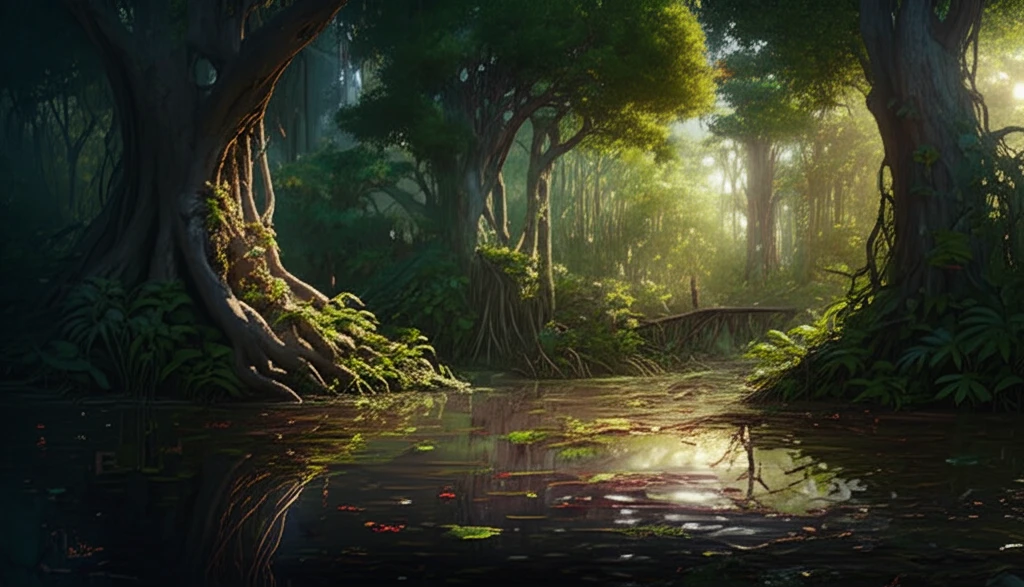
Amazon's Hidden Forests: Unlocking the Secrets of the Igapó
"Discover the unique tree species thriving in the flooded forests of the Negro River and the challenges of preserving this vital ecosystem. Understanding Igapó Forests Species Diversity."
The Amazon rainforest, a name synonymous with biodiversity, holds secrets within its flooded depths. These aren't your typical rainforest floors; they're the igapó forests, a realm where the Negro River's dark waters dictate life's rhythms. Characterized by high species richness in generally uniform habitats, the Amazon's complex ecosystems have intrigued scientists for decades. Yet the specific ecological dynamics of its seasonally flooded forests are still being unraveled.
Scientists estimate that the Amazon is home to between 30,000 and 50,000 species of woody plants, a number recently updated to around 16,000 tree species. This incredible diversity has spurred numerous theories, with the ‘museum model’ suggesting climatic stability allows species to accumulate over time due to low extinction rates. However, this theory doesn't fully account for the region's past climatic shifts.
An alternative theory proposes that the Amazon's diversity is a result of more recent speciation events, driven by allopatric differentiation, where populations evolve separately in isolated refuges. Geological events like the uplift of the Andes and the formation of the Panama Isthmus also contributed to this diversification. However, if understanding the plant life of mainland forests is a challenge, the seasonally flooded forests present an even more intricate puzzle.
The Blackwater Enigma: Life in the Igapó

Igapó forests, also known as blackwater forests, are distinctly shaped by the long, predictable flooding periods that dramatically influence the structure and composition of plant species. This continuous change poses unique challenges and opportunities for the flora that call these forests home. Alfred Russel Wallace, a pioneering naturalist, first categorized the Amazon's waters into three limnological systems: white water, clear water, and black water. The black water rivers, draining the ancient Paleozoic and Pre-Cambrian soils of the Guiana Shields and Central Brazil, owe their color to the decaying leaves, roots, and other plant materials present in the water.
- Habitat Richness: Igapó forests boast a complex mosaic of micro-environments, each supporting distinct plant communities.
- Geohydrological Stability: The relative stability of the Amazon basin over millions of years has allowed for the evolution of highly specialized species.
- Nutrient Dynamics: The unique water chemistry of blackwater rivers influences nutrient availability, shaping the flora that can thrive in these conditions.
- Adaptations to Flooding: Trees have developed ingenious strategies to cope with prolonged submersion and oxygen-deprived soils.
Conserving the Amazon's Submerged Treasures
The igapó forests of the Amazon represent a unique and vital ecosystem, harboring specialized tree species adapted to the region’s seasonal flooding. Understanding the distribution patterns and ecological factors is essential for conservation efforts. As the Amazon basin faces increasing pressures from deforestation and climate change, preserving these submerged treasures becomes ever more critical for maintaining the region’s rich biodiversity and ecological integrity. Through continued research and conservation, we can ensure these unique forests thrive for generations.
